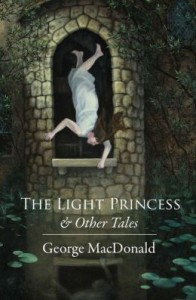 The uber-talented team that created The Foocy (2005) brings 2015 Fringe audiences THE LIGHT PRINCESS, a new adaptation of George MacDonald’s 19th-century Scottish fairytale about a princess cursed with an absence of both gravity (weightlessness) and gravitas (a lack of seriousness). Though her floating can be controlled by swimming, the king and queen must find a cure for their daughter’s inability to feel sadness, fear, or love before her sixteenth birthday.
The uber-talented team that created The Foocy (2005) brings 2015 Fringe audiences THE LIGHT PRINCESS, a new adaptation of George MacDonald’s 19th-century Scottish fairytale about a princess cursed with an absence of both gravity (weightlessness) and gravitas (a lack of seriousness). Though her floating can be controlled by swimming, the king and queen must find a cure for their daughter’s inability to feel sadness, fear, or love before her sixteenth birthday.
The 85-minute workshop reading features original live music, preliminary designs for puppets and scenic effects, and an inventive approach to a traditional story that will appeal to adults and children alike. Prior to Fringe rehearsals, the creators of THE LIGHT PRINCESS—Tony Lawton, Matt Pfeiffer, Dave Jadico, Aaron Cromie, and Alex Bechtel—took time out of their hectic summer schedules to discuss the new work with Phindie.
PHINDIE: THE LIGHT PRINCESS is not a particularly familiar story to most people, though it was recently staged by the American Repertory Theater Institute. When did it first come to your attention, and why did you decide to create a new version?
TONY LAWTON: The author George MacDonald heavily influenced C.S. Lewis; Lewis quoted him and wrote essays about him. So when I was doing research for my shows on Lewis in the mid- to late-1990s, I naturally went to MacDonald. I read a lot of quotations as well as his longer works, and I felt that the fairytales were his strongest. Lantern Theater Company was trying to get me to do something new for them; originally I wanted to do an adaptation of Tolkein’s Farmer Giles of Ham, but I couldn’t get the rights. THE LIGHT PRINCESS is in the public domain, it appeals to a young audience, and it’s the brightest of MacDonald’s fairytales, with the fewest dark elements that would be frightening for children, so I decided on that one.
PHINDIE: At what point did you invite Matt, Aaron, Dave, and Alex to work to with you on this project?
TL: In 2005 at the Lantern, and then again in 2010 at Delaware Theatre Company, Aaron, Dave, Matt, and I worked together on The Foocy, an original play that we created and performed. I wanted to collaborate with them again, as well as with Alex, who was not a part of The Foocy. Lantern sponsored me for an Independence Foundation grant in October 2014, so I talked to everyone at that point; I had to get formal letters of consent and commitment from them for the application. We got the grant in January of this year, essentially for a workshop exploration of the script and design, and have been working on it ever since.
PHINDIE: What was your reaction when Tony presented this idea to you, and what are your contributions to the show?
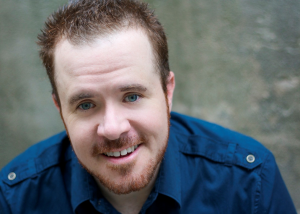
MATT PFEIFFER: I’m functioning strictly as the director, as an outside eye for the performers. The process of creating The Foocy was a huge turning point in my life. At the time, although I had done a little directing–a few children’s shows for the Pennsylvania Shakespeare Festival–I was still mostly working as an actor. Through my friendship with Tony, and also with Dave and Aaron, I was given the role of director, since I was the only one in the group with any directorial experience up to that point. It was a pure, imaginative process, outside of our experience and skill set, and it was fun to revisit it five years later in 2010, so we wanted to work together again as a group. The Foocy was an original fairytale invented by Tony, not going back to the ancients or the Brothers Grimm; similarly, THE LIGHT PRINCESS is what I call a foundation fairytale in a sense of being more recent, taking a space between the modern world and the land of yore. It’s not as distant, because it has a 19th-century writer’s sensibility, but it’s also the type of story that calls for the kind of magic we’re making on stage, with a floating princess, a lake draining and refilling. It requires inventive stage-crafting, so it was very enticing for me.
AARON CROMIE: Can you do exponentials? Because my answer was yes to the 10th power!We’re a group of like-minded people who have similar interests and ideas; there’s a lot of love. It’s like being in a band with members who went their own separate ways, but then came back together again for the shared experience, to create something they all care about and have in common. I’m doing the puppets and helping Dave with the lighting for the shadow puppets; we’re exploring a little different approach than what we did for The Foocy. I’ll also be singing and performing, I have a couple of roles. Alex is continuing to write the music, so I might be playing, depending on the instrumentation and whether or not I have a free hand while working the puppets.
DAVE JADICO: I was excited, to say the least, to work again with this terrific group of artists.I was unfamiliar with the story, but after reading it, and now after reading Tony’s adaptation, it immediately started sparking ideas for fun solutions. Swimming, flying, floating . . . all terrific challenges to be explored, and this group is always willing to experiment and say “what if . . .?!” I love making theater that way.
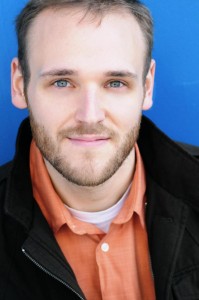
ALEX BECHTEL: I was on board when Tony was writing the grant, in his early stages of wanting to make it into a musical. I’m not sure if I was his first choice, but I know he was looking for someone to be a part of the ensemble and to compose the music, so he thought of me. I was thrilled when he contacted me! I’m a big fan of his and the intelligence of his original work, the artful way in which he crafts a story. I was also excited because when I make music, I usually do the score and lyrics simultaneously. So this is an interesting challenge for me, to have Tony writing the lyrics, and then giving them to me to score. We’ve had conversations about the ideas and the mood, so I understand the kind of music he wants, what would be right for the script and the songs. It’s very rewarding to score someone else’s work; I’ve done it with Jennifer Childs for 1812 Productions, and also with the Pennsylvania Shakespeare Festival, creating the music for Shakespeare’s lyrics. But THE LIGHT PRINCESS is different, because these songs are coming from a place of moving the plot and character-development forward, and I feel like we’re creating real dramaturgy through music. So I have the personal challenge of setting lyrics like that for the first time, and of scoring an entire full-length musical, not just a few musical numbers—many more than I did when I created The West. My goal in composing is to make it cohesive and to make it exist in a world of its own, to find the specific landscape of Tony’s writing–with the different colors, but within the same world. I try to do that every time I approach a new musical project; I ask myself how do I become the composer for the specific tone of that landscape.
PHINDIE: What is your creative process, both individually and as collaborators?
TL: I’m the lead writer on the script and lyrics; so far we have a full draft and lyrics for all but two of the twelve songs. We’ve done readings of some of the scenes, and just last week we read the entire draft. Of course the lines blur a little when we work together; everyone puts in their two cents, and I’m making the adjustments. As they’ve already said,Bechtel is writing the music and Cromie is doing prototypes of the puppets along with Jadico, who is also creating the concept for the set, using shadow puppets, light, and mirror reflections—it’s a really clever design. For the Fringe, the format will be a staged reading with all the songs–compositions, arrangements, and musical accompaniment. The cast will be seated at music stands, and Aaron and Dave will have some of the preliminary puppets to give a feel for the full production. We may have some costumes or not, but there will definitely be prototypes of the puppets and a scenic effect, and live music with Jadico and Bechtel, and we hope Cromie, and Pfeiff. Tabitha Allen has been cast as the Princess, so she will also sing. We won’t have her attached to wires for the floating scenes, we’ll use puppetry and will also expect the audience to use their imaginations. I think that’s a good exercise for kids, and it’s an important aspect of fairytales.
AB: The very first thing I did was to buy a copy of THE LIGHT PRINCESS and to read more of George MacDonald’s writing. I wasn’t familiar with the story or with his work. As a group we’ve had sessions together over the past few months, but as we get closer to the date of the Fringe, there will be more work and a lot more collaboration ahead of us. The Foocy group has worked together before, so they’re already familiar with the way that they work together, but I wasn’t involved in that, so I’m excited to find out how this new ensemble will work together. They’re all very generous and curious as artists, so the spirit of collaboration is very alive. Matt is the kind of director you really do want in the room corralling everyone. Because this is a work-in-progress, still in the incubation phase, we’re not sure of who will perform the music once the instrumentation is done, but since the cast is multi-instrumental, it would be a crime not to have these talented people contributing to the music on stage! Their contributions will help to shape the material, as well; I see music as a mutable, living organism, so I’m always hungry for the input of collaborators, especially here, with such a strong ensemble.
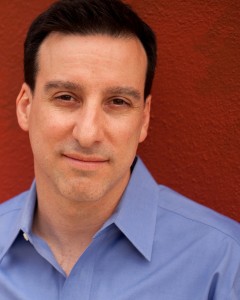
DJ: I read the story and visualize the composition of a specific and significant moment, and I force myself not to think right away about feasibility and the costs of achieving it. Next, I try to think backwards to how the components of that image are created and what “tool box” is needed to create it. Then I work forward and start to explore what else we can create with this “tool box.” I really enjoy repurposing scenic elements and getting multiple looks and applications out of limited objects.
AC: Individually we all react to the story, then share images and styles. I brought in a few images, as did Dave, and Alex has responded musically to Tony’s story. Then Tony incorporates our responses into his script, and we all consider possible avenues of approach. He gave us a really solid first draft, and incorporated our reactions into his second and third drafts. So there’s a lot of overlap in our collaboration, we all work together on many of the aspects of the show. Of course we hope that when people come to the Fringe workshop production, they understand it’s still relatively early in the development process, that it’s a work-in-progress. But we’ll get a gauge of what’s next and how people respond.
MP: Yes, this has been development time for THE LIGHT PRINCESS. As with The Foocy, I’m following an intuitive road, though one that is more informed after now having directed some fifty productions. How to keep the story clear while also engaging in exciting magical impulses is my concern as the director. It’s an ensemble presentation, with Dave, Alex, and probably Aaron performing the music, along with Tony and Tabitha who are also singing and performing, so as a work-in-progress we hope to see how the story plays to an audience, and how we can make it progress, flourish, and thrive.
PHINDIE: Why are fairytales important?
TL: Fairytales are important because they cross cultural lines and age lines. They convey archetypal stories of universal and psychological interest. You can tell the same fairytale to different audiences and everyone gets something out of it.
DJ: Fairytales have high stakes and happy endings. And I love what Tony said about it being able to reach different audiences.
AB: Fairytales are vitally important as stories we tell ourselves to help make sense of our lives. We tell them to children because they’ll face these issues, and because the stories are beautiful ways to consider the human condition. I have so much love for a story that appeals to so many generations and different walks of life, that’s as engaging for an 84-year-old as for a four-year-old.
MP: I think at the root of all great stories is a tale that started around the campfire. In the 21st century, when you can get anything you want at any time on a digital device, it’s a relief to know that there are seeds that were planted long ago in what I call campfire stories. The idea of good versus evil is fundamental, and fairytales always have those foundation principles at their heart. THE LIGHT PRINCESS is about unchecked selfishness; the Princess has to experience great loss in order to understand how selfish she is. These are stories that transcend time, place, culture, class, and technology, that talk about basic, universal things. Shakespeare is also about these inexhaustible core ideas of human existence, discussed with great complexity, while fairytales explain them in a simple way. They escape the confines of a complicated narrative, and are filled with whimsy and magic, which is a very freeing experience.
AC: We’re always telling stories. As a group, we’re interested in finding ways to tell a funny story, and this old story is so witty and funny. We’re not really trying to moralize, but there is a message in the play, and it contains fantastical elements that are out of the ordinary. When there’s magic, we want to be a part of it.
PHINDIE: Though this is an all-ages show, is part of the concept to introduce children to the theater at an early age, with the hope that they will become lifelong fans?
AB: Yeah, that’s certainly a part of it, though I rarely think of it as, “Oh, it’s so important to make them want to see it when they’re older.” But kids are exposed to so much through digital media, you can’t get into a cab without a screen yelling at you. It’s ubiquitous in our society, so when a child is able to be engaged in live performance, it’s exciting. When I did Into the Woods at Theatre Horizon I had to transition from my role as a stepsister to Milky White the Cow on stage, in front of the audience. It was a simple, actor-generated change, with no special effects, but during one performance, a four- or five-year-old boy started jumping up and clapping when I did it. That’s a moment that I will never forget, that means so much to me. To touch the imagination of someone that young is really inspiring, because it’s so easy for that generation to be desensitized and bombarded by the constant digital media out there. It touched my heart to inspire that reaction in a child.
AC: Absolutely! The kind of stuff we’re interested in is captivating visual designs that appeal to kids, and also to adults. It’s always great to see how people of all ages react to the simplest of things, like shadows on a screen, even though they have access to all kinds of technology and digital images. But it’s the simple things that take our breath away; they inspire people to try it themselves when they go home.
MP: I think the biggest responsibility to kids as a theater artist is to let them know that theater is cool—it’s not boring or academic, or like eating vegetables! It’s an alternative to TV and the device in their hand, and it should make them want to come back. To tell the story well, to get them interested, you can’t talk down to a young audience, but you have to be conscious of your own 21st-century perspective, be it in energy or focus. I filter the story through certain qualities of our own time, with an eye towards wanting the experience to be engaging and sensational.
TL: I see a lot of children’s shows that cater to really little kids, and I’ve also seen ones that are of interest to all ages. Even before I was a father, I was already interested in children’s theater as a smart alternative to TV and the movies. Now that I am a father, my son goes to the theater–and he just saw his first Shakespeare production this summer. I think there should be good, intelligent shows for kids, and that’s what I want to offer with THE LIGHT PRINCESS. There will be a lot of action in it that younger kids can follow, but it will also be very clever, so I think it will hold the attention of older kids and adults as well—it really will be a family show that should appeal to all ages.
DJ: I really like making entertainment that speaks to everyone–all ages being reached at the same time. I have worked for over 20 years with ComedySportz, the improv company, and part of our mission statement is that our product is for everyone. And much of the theater and comedy I have created over the years has been that as well. So I have dedicated a lot of my energy to making inclusive experiences, and that inclusiveness certainly includes children. There is nothing more satisfying than getting a 60-year-old, a 25-year-old, a teenager, and a six-year-old all laughing at the same thing.
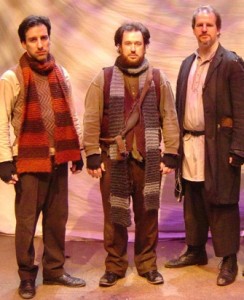
PHINDIE: What’s your first creative memory?
TL: I have a vivid memory of a Disney movie, The Goose that Laid the Golden Egg–Roger Ebert called it the worst movie of all time! But there was a scene with a ladder and someone crawling out on a roof that looked so dangerous to me. I was about five years old and I got really nervous because it was such an intense visual image; it created such a strong reaction in me that I can still remember how powerful it was.
MP: Getting to stay up late to watch Saturday Night Live was a huge influence on me as an eighth-grader; it was the first sense I ever had of wanting to be a performer. After that, I started doing shows in high school. Comic books were also a big thing for me, I first wanted to be a cartoonist, but I didn’t really have enough artistic talent for it. So directing is a hybrid of those, another way of telling a story.
DJ: I was greatly influenced by The Muppet Show when I was in elementary school, and more specifically, the episode with Steve Martin in 1977. It blew my mind. There was this guy I had never seen before that looked like a grown-up and was acting so ridiculous, cracking jokes, juggling, playing the banjo, interacting with the Muppets like they were his peers–it was awesome. I talked about it at school for months and it made me want to play instruments, to make my own puppets, to juggle; everything I saw him do, I wanted to do, too. To me, that was entertainment; that was comedy.
AC: I’m the son of a music and theater teacher, so it’s been my daily exposure since being conscious. It’s been a structure–or an environment–for me, as if my life has been floating in a sea of creativity. So it would have been impossible for me not to have responded to it, with all the singing and music and theater in my home. My two brothers are also creative thinkers and big fans of the theater.
AB: It’s hard for me to remember a time when I didn’t want to be in theater. I started doing plays at ten; it has always been my primary passion. I do recall my grandparents taking me to a play that had magicians and sorcerers on stage, and there were also gargoyles in the theater, which I thought were part of the architecture until they came to life! I was so profoundly affected that something so magical could happen at any time—that’s probably what started the wheels turning. But I was always a show-off and a clown–I was always performing!
PHINDIE: Since this short three-performance Fringe run is presented as a work-in-progress, what are your plans for the further development of the show?
TL: A good part of the function of this workshop production is to see how audiences respond, so we’ll see how it goes; this is largely an experiment and an exploration. But we’re having a really good time with it; the guys all said they laughed out loud a lot at the latest draft of the script, and the new dimension of music is fabulous. Lantern is definitely interested in developing it further, and I would love for it to evolve into a full-stage production.
AC: I think we all have hopes of where this will go–even some secret ones that we haven’t shared with each other–but we all believe in the story and our way to tell it. I’m a metaphor guy, so I see our work-in-progress as being like a football team; you have to get through the season to make it to the playoffs! That’s what we’re trying to do with the Fringe presentation.
The three-day Fringe run of THE LIGHT PRINCESS will take place in the Lantern’s underground black box space, the Lantern Lab. Because of the narrow seating area, attendance is limited to 45 people per show, so if you’d like to follow the development of this imaginative new work from its early stages, be sure to get your tickets before they sell out![The Lantern Lab, St. Stephen’s Theater, 923 Ludlow St.] September 11-13; fringearts.com/event/the-light-princess

One Reply to “Fringe Preview: THE LIGHT PRINCESS (Tony Lawton with Ugly Stepsister)”